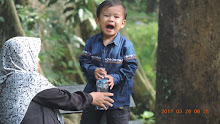You are member of this Ummah, member of this great Ummah,
especially young member of this Ummah, You have to constantly working to make this society
better, to do something good for people.
You don’t have free time, you don’t have time to play video games for 6 hours, you don’t have time for grand theft auto, you don’t have time for modern warfare, you don’t have time!, you don’t have time for the movie that’s coming out, you don't have time for watching Champions League,
You have time to do more important things, because you are youth of this Great Ummah.
You don’t have free time, you don’t have time to play video games for 6 hours, you don’t have time for grand theft auto, you don’t have time for modern warfare, you don’t have time!, you don’t have time for the movie that’s coming out, you don't have time for watching Champions League,
You have time to do more important things, because you are youth of this Great Ummah.
As a muslim Ummah hold yourself to a high standard, Not just because the
elders are telling you, the teachers telling you, parents telling you,
or somebody else telling you, But your own conscious should tell you, your Laa
Ilaaha Illallah should tell you man!, It
should tell you that you have to be active people,
You will see corruption, injustice around you in society, you will see youth that are getting away from Allah, who do you think will invite them? Me? No!
 Those kids that don’t come to the
masjid, those kids that don’t come for schooling, I have no way of reaching
them, you have to reach them, they are your friends, They hang out with you,
not with me. You gotta go to them, you have to be their daai and daaiyah, you have to be an
inspiration to them, so you have to make sure that you become a person of concern
for those around you,
Those kids that don’t come to the
masjid, those kids that don’t come for schooling, I have no way of reaching
them, you have to reach them, they are your friends, They hang out with you,
not with me. You gotta go to them, you have to be their daai and daaiyah, you have to be an
inspiration to them, so you have to make sure that you become a person of concern
for those around you,
You don’t just complain about your friends, man.. my friends all they do is watching movies, playing, have you ever advised them? Have you ever given them something more positive to do instead.. have you been a good influence for them?
You will see corruption, injustice around you in society, you will see youth that are getting away from Allah, who do you think will invite them? Me? No!
 Those kids that don’t come to the
masjid, those kids that don’t come for schooling, I have no way of reaching
them, you have to reach them, they are your friends, They hang out with you,
not with me. You gotta go to them, you have to be their daai and daaiyah, you have to be an
inspiration to them, so you have to make sure that you become a person of concern
for those around you,
Those kids that don’t come to the
masjid, those kids that don’t come for schooling, I have no way of reaching
them, you have to reach them, they are your friends, They hang out with you,
not with me. You gotta go to them, you have to be their daai and daaiyah, you have to be an
inspiration to them, so you have to make sure that you become a person of concern
for those around you,You don’t just complain about your friends, man.. my friends all they do is watching movies, playing, have you ever advised them? Have you ever given them something more positive to do instead.. have you been a good influence for them?
You know this is what you have to do, may Allah make you
the leaders of this ummah, and Allah make you role models for others who have
gone away from Allah and bring them closer to Allah, may Allah make all of you
good examples of Islam, so when the non muslims who come to this country, to
this school, they just see you and they say "Man.. I wanna be a muslim, I wanna be
like that guy, I wanna be like that lady".
We want you to be like that, that’s the character you live
by, your honesty, your integrity, the way you carry yourself, the respects you
to show to others, you know they just see that and they say "Man I wanna be a
muslim, this muslim have something special", that is what you have to become,don’t think your gonna give dawah by only handing
them a pamphlet or giving them a website address, or showing them a video, the powerful da'wah to islam is the character of a muslims, you are the ambassador of islam,
without even opening your mouth.
Whatever they see you doing, they think that’s Islam,
whatever you are doing, no matter when your doing it, you are ambassadors of
islam, Allah will ask you and me on the day of judgement, this is what you
showed to those who are coming to Islam, are you the reason they came close to
islam, or you were the reason, they went even further away from Islam,
subhanallah, My Dear.. the Responsibility rests on your shoulder.









.jpg)



